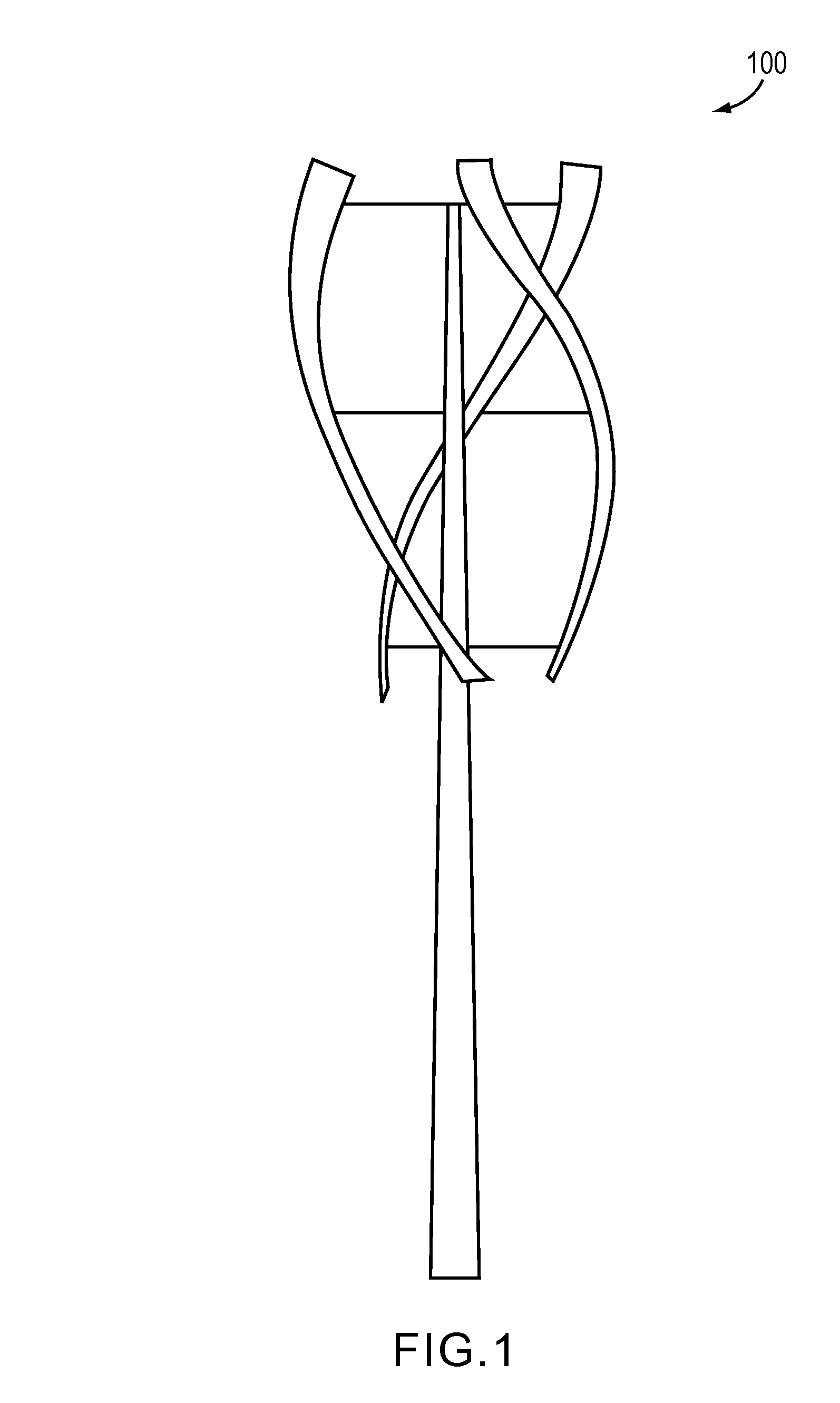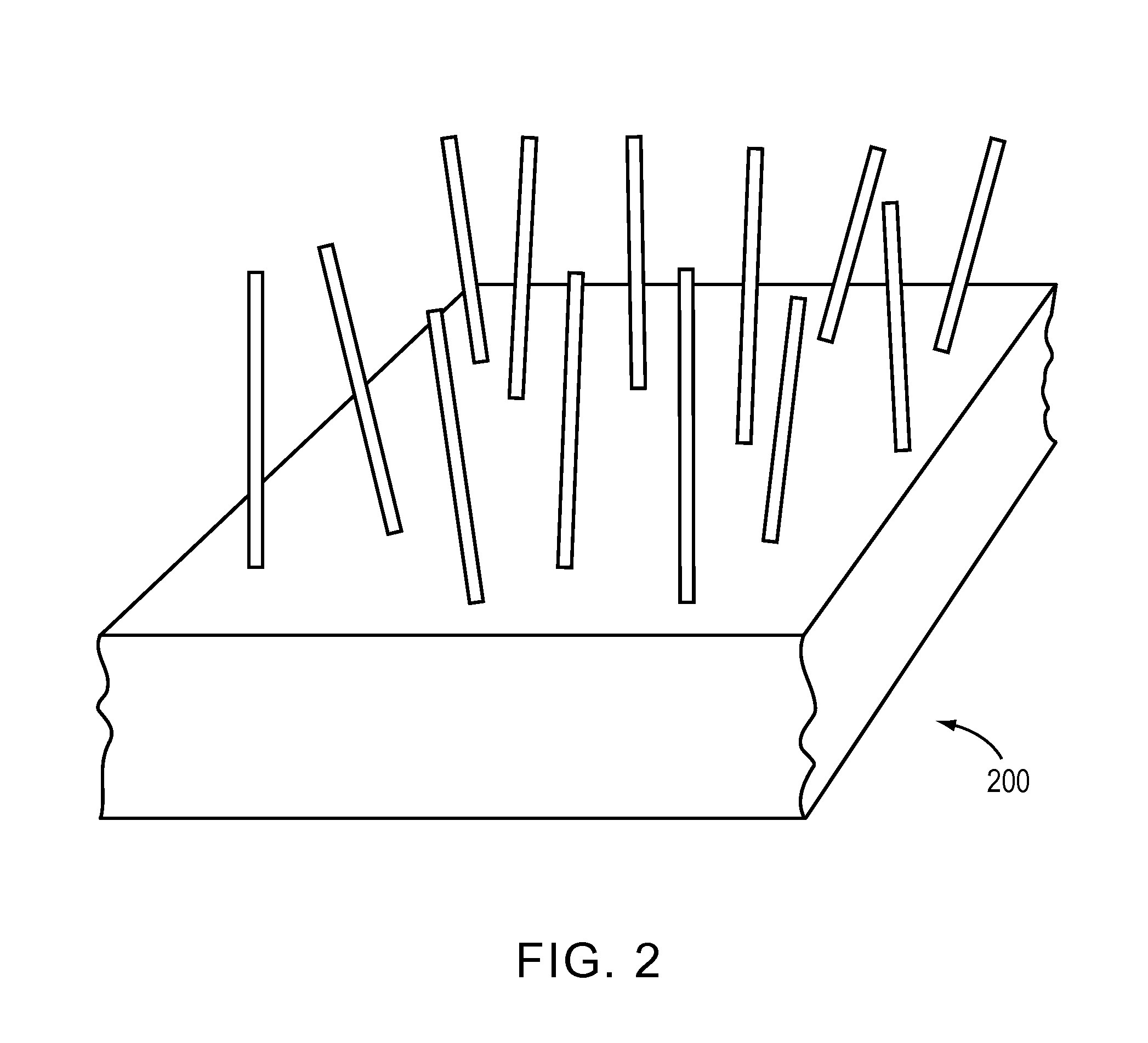Method for creating micro/nano wind energy gathering devices
a technology of wind energy gathering and nano-technology, applied in the direction of renewable energy generation, electric generator control, final product manufacture, etc., can solve the problems of large wind turbines facing environmental and defense department concerns, noise and size of turbines, and limitations of distribution and deploymen
- Summary
- Abstract
- Description
- Claims
- Application Information
AI Technical Summary
Benefits of technology
Problems solved by technology
Method used
Image
Examples
Embodiment Construction
[0022]A description of example embodiments of the invention follows.
[0023]“Wind” as used herein refers to both wind created by the movement of vehicles (hereinafter also “dirty wind”) and atmospheric wind.
[0024]A “wind energy gathering device” as used herein, is a device that converts wind energy into electrical energy. Wind energy gathering devices may include one or more “wind turbine generators.” A “wind turbine generator” (also “wind turbine” as referred to herein) is a device that includes a turbine and a generator, wherein the turbine gathers or captures wind by conversion of some of the wind energy into rotational energy of the turbine, and the generator generates electrical energy from the rotational energy of the turbine. An example wind turbine generator is illustrated in FIG. 1. These wind turbine generators 100 can employ a turbine rotating around an axis oriented in any direction. For example, in a “horizontal axis turbine,” the turbine rotates around a horizontal axis ...
PUM
| Property | Measurement | Unit |
|---|---|---|
| size | aaaaa | aaaaa |
| height | aaaaa | aaaaa |
| radii | aaaaa | aaaaa |
Abstract
Description
Claims
Application Information
 Login to View More
Login to View More - R&D
- Intellectual Property
- Life Sciences
- Materials
- Tech Scout
- Unparalleled Data Quality
- Higher Quality Content
- 60% Fewer Hallucinations
Browse by: Latest US Patents, China's latest patents, Technical Efficacy Thesaurus, Application Domain, Technology Topic, Popular Technical Reports.
© 2025 PatSnap. All rights reserved.Legal|Privacy policy|Modern Slavery Act Transparency Statement|Sitemap|About US| Contact US: help@patsnap.com



